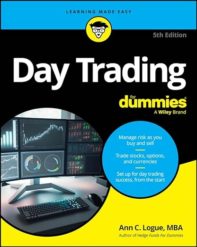College admissions isn’t quite as difficult as most people think; once you get past the top 30 or whatever colleges, most students who are reasonably serious and reasonably prepared will be accepted. The real trick is paying for it.
Different colleges have different approaches. Some colleges are need-blind: they draw up their freshman class without considering ability to pay, then provide enough financial aid so that everyone who gets receives the aid they need based on their family’s financial position (which may not be the aid they want, but that’s another story.) These tend to be the richest schools: Harvard, Princeton, Northwestern, and the like.
Other colleges accept their classes without considering ability to pay, but they are not in a position to offer enough aid based on family financial position. Some students get in, but they can’t reasonably afford to go.
Another group of colleges does consider ability to pay in that if your family can pay the full freight, your child is more likely to get in.
Colleges that offer merit aid will give the students that they want to attract money to entice them to attend, whether or not the family otherwise qualifies for aid. At an extreme, you have Justin Combs, son of rapper Sean Combs, attending UCLA on an athletic scholarship.
Finally, just about all universities, even those that are already rich beyond belief, will take on what are known as “development” admits. These are students whose families can not only pay full tuition, but they can also throw in a building or an endowed chair to sweeten the deal. (Sometimes, the family has to buy another building to get the kid to graduate . . . or so rumor has it.)
All of this raises interesting ethical challenges. Should colleges admit students knowing that they can’t afford to go? Should people with money have an advantage in admission, on top of all the other advantages they have in life? To what extent are universities public goods and to what extent are they exclusive groups that can spend their money however they want? Justin Combs’ family didn’t need the money, and he qualified for the scholarship based on his skills, but is that right?
I have no great conclusion about any of this. Distribution of college financial aid, need and merit based, is one of those massive gray areas in life. If you are advising a student about college admissions, though, I’d suggest that you not get hung up on the published tuition price – but don’t get too hung up on the school, either. When I went to Northwestern, it was the most expensive college in the United States, but my parents feel that they got a better deal on financial aid there than at the colleges my siblings attended.
It is fair to tell a child that their attending a college is contingent on the amount of the aid package. A college’s definition of need may be different from yours (e.g., are you willing to give up vacations to pay tuition?), and some colleges simply don’t have the funds to offer, no matter how talented and deserving a student may be. If you ask a little bit, you can get a sense of what the campus policies are, and they may even be published.
There has been a push to get colleges to publish net prices, which would be the quoted tuition price adjusted for average financial aid packages. That may be give you a clue about how much money is available, but you won’t have a definitive answer until April 15.


